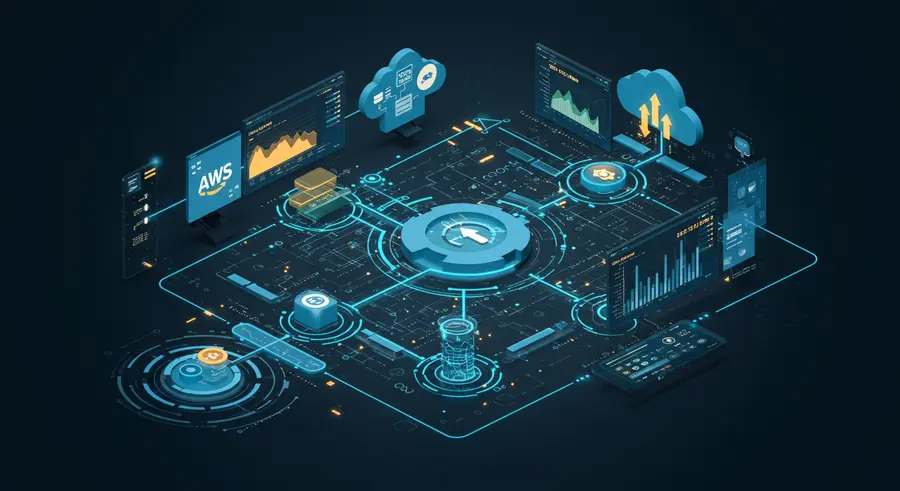The Convergence of AIOps and Observability
In today's dynamic and complex IT landscapes, merely reacting to issues is no longer sufficient. Organizations need proactive strategies to maintain system health, ensure performance, and deliver seamless user experiences. This is where the powerful combination of AIOps (Artificial Intelligence for IT Operations) and Observability comes into play. While both disciplines aim to enhance IT operational efficiency, their convergence creates a holistic approach that moves beyond traditional monitoring to predictive insights and automated remediation.

Observability provides deep insights into the internal states of a system by collecting and analyzing telemetry data: metrics, logs, and traces. It answers the "why" behind performance issues and helps pinpoint root causes in distributed environments. AIOps, on the other hand, applies advanced analytics, machine learning, and automation to this vast pool of data, turning raw information into actionable intelligence. Together, they form a robust framework for managing modern IT infrastructure.
Understanding Observability
Observability is not just about collecting data; it's about making systems understandable. It's the ability to infer the internal state of a system by examining its external outputs. The three pillars of observability are:
- Metrics: Numerical data representing the performance or behavior of a system over time (e.g., CPU utilization, memory usage, request rates).
- Logs: Discrete, timestamped records of events that occurred within a system, useful for debugging and understanding specific occurrences.
- Traces: End-to-end views of requests as they flow through distributed systems, showing latency and dependencies between services.
By leveraging these pillars, teams can gain a comprehensive understanding of their applications and infrastructure, from individual components to complex microservices architectures. This deep visibility is crucial for diagnosing issues quickly and effectively, especially in cloud-native environments.
How AIOps Enhances Observability
While observability provides the raw data and the means to explore it, AIOps brings the intelligence to make sense of it all at scale. AIOps platforms ingest data from various observability tools and then apply machine learning algorithms to:
- Automate Anomaly Detection: Identify unusual patterns in metrics, logs, or traces that might indicate a problem before it impacts users.
- Reduce Alert Fatigue: Correlate disparate alerts into meaningful incidents, filtering out noise and prioritizing critical issues.
- Predictive Insights: Forecast potential issues based on historical data and trend analysis, allowing for proactive intervention.
- Root Cause Analysis: Automatically pinpoint the likely cause of an issue by analyzing relationships between different data points.
- Automated Remediation: Initiate automated scripts or workflows to resolve known issues without human intervention.
This integration transforms vast streams of telemetry data into clear, actionable insights, significantly reducing the mean time to detect (MTTD) and mean time to resolve (MTTR) incidents. It helps IT teams move from reactive firefighting to proactive management and continuous optimization.
Benefits of a Combined Approach
The synergy between AIOps and observability delivers numerous benefits:
- Enhanced Proactiveness: Predict and prevent outages before they occur, improving system reliability.
- Faster Troubleshooting: Quickly identify and resolve issues, minimizing downtime and business impact.
- Operational Efficiency: Automate routine tasks and reduce manual effort, freeing up IT staff for more strategic initiatives.
- Improved User Experience: Maintain high levels of service availability and performance, leading to greater customer satisfaction.
- Cost Savings: Optimize resource utilization and reduce the need for extensive manual monitoring.
- Scalability: Effectively manage increasingly complex and distributed IT environments without being overwhelmed by data.
For businesses seeking to gain a competitive edge through technology, embracing this combined approach is paramount. Just as a strong financial portfolio requires robust market insights, so too does a modern IT infrastructure demand sophisticated operational intelligence. Leverage market sentiment analysis to understand your IT landscape better.
Challenges and Future Outlook
While the benefits are clear, implementing a fully integrated AIOps and observability solution presents challenges, including data integration complexities, the need for skilled professionals, and ensuring data quality. However, as AI and machine learning technologies mature, and as organizations increasingly adopt cloud-native architectures, the tools and methodologies for achieving this synergy will become more sophisticated and accessible.
The future of IT operations lies in intelligent, autonomous systems capable of self-healing and continuous optimization. AIOps, powered by comprehensive observability, is the cornerstone of this evolution, promising a future where IT infrastructure is not just managed, but truly understood and proactively maintained. For further reading, you might find insights on distributed tracing at OpenTelemetry or learn about metrics from Prometheus.